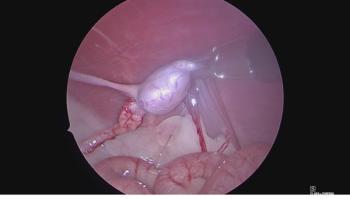“We laid out the plans on a bulletin board and empowered the team to take charge of their departments and lay it all out,” he says. “They weighed in on what would and wouldn’t work, what they wanted to see in their space. Getting the team involved in the process helped build their excitement and give them a space that works for their unique needs. We were in constant communication, talking about and looking toward the future.”
Clients and the community also were excited about what was to come. Mankowski says locals were happy that it wasn’t a big corporation coming in, but rather an extension of a part of the community for more than 40 years. “Community members have been with us since the beginning, helping us grow,” Mankowski says. “They feel [as though] they’ve been a part of it all along and are happy for us. And they’re glad to have these resources close to them in a place they are already comfortable with and used to.”'
The same holds true for referring hospitals, he says. They are happy to support Mount Laurel’s expansion of services, knowing they can refer even more cases to a local team they know and trust.
A testament to the hospital’s reputation in the community is that of the 2 former owners (the founder and the subsequent owner), 1 has a daughter who works at the practice as a cardiologist and the other is still on staff. “The original owners are very supportive and happy for us, to see how their dreams have grown with us,” Mankowski says.
Surround yourself with a good team
Here’s something you don’t hear every day: Mankowski and Torre met their hospital builder at a chili party. Old-fashioned socializing and networking brought the perfect builder for their project into their lives as just the right time.
Granted, the builder had never constructed a veterinary practice. But Mankowski says they had the ability to communicate well and trust one another, which was most important to the process.
The builder had constructed some other types of medical facilities previously. And now, his experience with Mount Laurel Animal Hospital has opened the doors to more veterinary hospital builds.
“We really enjoy our builder and are friends with him now,” Mankowski says. “But you don’t have to be friends with your contractors, as long as you can communicate well and be on the same page as those on your team.”
Mankowski also stresses how important it is to do your homework in all areas before starting a construction project. He consulted an architect who has designed veterinary facilities, visited specialty veterinary hospitals, and referenced magazines all to determine exactly what would make a specialty/ emergency practice run most smoothly.
Despite all the research—and the admonitions that most people build too small—Mankowski believes they built too small. He regrets that he didn’t add at least another 10 exam rooms and a third floor to the building.
Make space for the community
Building a space to care for animals is important. Creating a space that welcomes the community and offers a peaceful respite for staff members is a bonus.
Mount Laurel Animal Hospital sits on 16 acres of farmland. On the farm, staff members raise chickens and sell eggs, care for goats and offer goat yoga classes, and welcome 50 to 80 visitors per day. In nonpandemic times, students visit for field trips.
“This is the dream of the original founder, to be a part of the community and a resource to teach about animals any way we can,” Mankowski says. “We take pride in welcoming people to our farm. It’s an important part of our responsibility as veterinarians to teach the next generation about animals.”
They don’t charge visitors to tour the land, although some have suggested it. The owners want to keep the space a free and welcoming space to all.
Last fall, they asked the public to donate their pumpkins when they were finished with them. They received more than 2,000 pumpkins, then allowed visitors to sign up for a time to come feed the pumpkins to e animals. The time slots were filled within 2 hours.
A bonus in all of this is that the farm offers staff peace in the midst of their crazy days. A new deck attached to the hospital overlooks the farm and a serene pond; here, staff members have a spot to enjoy their lunch or take a quick mental break. “Veterinary medicine is such a challenging profession; it’s important to take care of our employees and give them a good work environment,” Mankowski says.
Sarah A. Moser is a freelance writer in Lenexa, Kansas.





